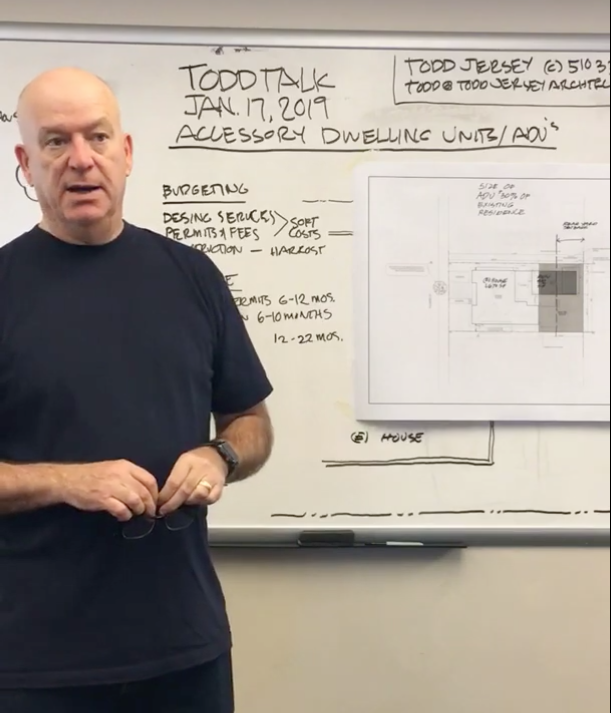NEW California ADU Laws in 2020: What You Need to Know
“. . . the new laws are intended to address the ongoing housing crisis and to make ADU development easier. . .”
New ADU laws that take effect January 1, 2020 will make ADU development easier. ADU is the acronym for Accessory Dwelling Unit; as the name suggests, this type of small dwelling is an accessory to (additional to) a main home in a single family residential area. ADUs are inter-generational housing that were historically called “granny units” because they were generally built for aging parents to enable them to live with their children while retaining the privacy of their own dwelling. ADUs were rare prior to 2017 because modern planning codes rendered this type of structure illegal or difficult and expensive to get built. Additional parking was typically required as were very expensive, independent utility connections from the street to the ADU.
In 2017, due to years of work by community activists, the State of California passed a series of laws - SB 1069 (Wieckowski), AB 2299 (Bloom), and AB 2406 (Thurmond) - to make the creation of ADUs easier. The most fundamental and important of these laws was (and remains today) the law eliminating the requirement for additional parking for ADUs (provided the site is within a mile of public transit). Other important laws passed in 2017 included making it illegal to require ADUs to have separate utility connections. These state laws have led to a boom in construction of ADUs throughout California.
Community activists continued campaigning after the initial laws passed and this year the state legislature passed a series of laws under AB 68 that will take effect January 1, 2020. Those laws include Assembly Bill (AB 881), Assembly Bill (AB 670), Senate Bill 13 (SB 13), and Assembly Bill 68 (AB 68). The new laws are intended to address the ongoing housing crisis and to make ADU development easier. We list the five main aspects of new ADU law here that support getting ADUs built.
It is important to understand that all jurisdictions can create more lenient or liberal ordinances allowing owners to create ADUs that are larger and taller than the State minimum. Jurisdictions like San Mateo County, for example, allow for two-story ADUs. When putting together your ADU project plan, be sure to check with your local jurisdiction for ordinances that support ADU construction.
If you are interested in exploring how you can build an ADU on your property, Todd Jersey Architecture has been designing ADUs throughout the Bay Area and can guide you on the best type of project to maximize your investment. Email us or give us a call to set up your free project assessment. You can also sign up for our newsletter to receive ongoing updates about ADUs and other architecture related news.




